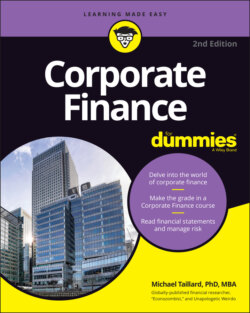Читать книгу Corporate Finance For Dummies - Michael Taillard - Страница 75
Evaluating the Weights on the Balance Scale
ОглавлениеEverything of value in a company falls into three primary categories. Each of these categories represents a portion of the balance sheet:
Assets: Assets include anything of value that currently belongs to the company or is currently owed to the company. Remember that the company purchases all assets by using capital acquired by incurring debt and selling ownership, so the total assets must balance with the cumulative totals of the other two portions of the balance sheet (see the next two bullets).
Liabilities: Liabilities include the value of all the company’s debt that must be repaid.
Owners’ equity: Owners’ equity includes all the value that the company holds for its stockholders.
Each portion of the balance sheet begins with the things that are the most liquid at the top. In other words, the top of each portion includes the things that either must be or otherwise can be converted to cash the quickest. As you make your way down each portion, the items included gradually become either decreasingly liquid or require repayment for longer periods of time.
Liquidity refers to the relative ease with which assets are turned into cash. Cash is clearly more liquid than capital assets like machinery, which must be sold to acquire cash, for example. When a company has become unable to turn their assets into cash in a time period necessary to pay their bills and continue operations, the company is said to be insolvent.
